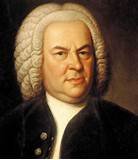Bach’s Orchestral Suite Air
Johann Sebastian Bach (1685-1750)
One of Bach’s most famous pieces even for non-musicians is his famous “Air” from his Orchestral Suite in D Major. It’s famous because it is transcendently beautiful.
A suite is a collection of short movements. Often in the Baroque period, the movements all were in the same key – in this case, the key of D. During the Baroque, suites were written for solo keyboard instrument (like the harpsichord or clavichord), for other solo instruments (such as the lute, violin, cello, and flute), and orchestra. The short movements were styled after dance music of the time, although by the time of Bach the music was for listening rather than for dancing.
Today, we might buy a recording of the film score from a movie. We find that it is a collection, much like a suite, of short excerpts. We might even see names of pieces like “Boarding the Federation Ship,” “Queen Amidala,” “Hedwig’s Theme,” and so on. Modern film composers often use a technique called “Leitmotif” to heighten the drama and cohesion of a film.
Music students remember the order that became customary for these dances with the acronym “ACSOG.” It stands for Allemande, Courante, Sarabande, “Other,” and Gigue. The “other” movements often were one or more minuets, although they could be other types of pieces as well. In the case of Bach’s Orchestral Suite in D, the movements do not follow the familiar pattern. The “Air” (confusingly, this means song, probably referring to its beautiful melody) in the Suite in D is the second movement. To some listeners the music is peaceful beyond description; to me it is profoundly sad. What do you think?
https://www.youtube.com/watch?v=GMkmQlfOJDk
Subscribe to receive an email notice when I post a new blog article.
Please leave a comment below if you like.
